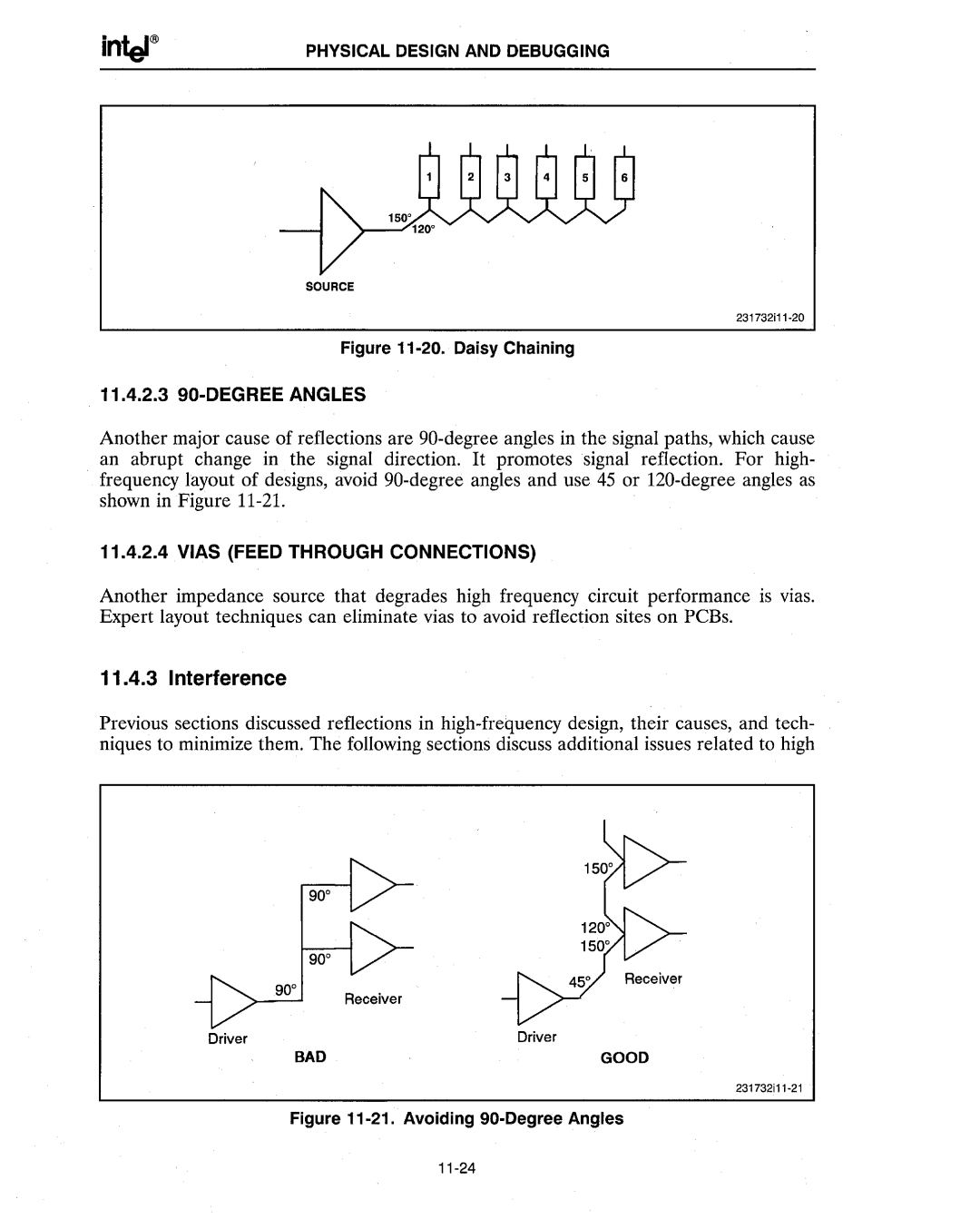
PHYSICAL DESIGN AND DEBUGGING
SOURCE
Figure 11-20. Daisy Chaining
11.4.2.3
Another major cause of reflections are
11.4.2.4 VIAS (FEED THROUGH CONNECTIONS)
Another impedance source that degrades high frequency circuit performance is vias. Expert layout techniques can eliminate vias to avoid reflection sites on PCBs.
11.4.3 Interference
Previous sections discussed reflections in
Receiver
DriverDriver
BADGOOD
